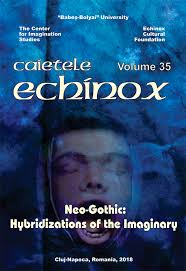2018
 Contemporary Japanese crime writers frequently resort to gothic themes and conventions in their works. This is hardly surprising, since Japanese detective fiction, which dominated Japanese popular literature in the early twentieth century, began as a reaction to nineteenth-century gothic crime stories of writers such as Edgar Allan Poe or Arthur Conan Doyle. This article discusses crime novels of Otsuichi, Natsuo Kirino, and Fuminori Nakamura as examples of Japanese crime gothic, focusing on the Japanese conceptualisation of monstrosity in relation to the figure of the criminal, complementarity of the victim and killer characters, and aestheticisation of violence in the context of Japanese aesthetics of impermanence and imperfection.
Contemporary Japanese crime writers frequently resort to gothic themes and conventions in their works. This is hardly surprising, since Japanese detective fiction, which dominated Japanese popular literature in the early twentieth century, began as a reaction to nineteenth-century gothic crime stories of writers such as Edgar Allan Poe or Arthur Conan Doyle. This article discusses crime novels of Otsuichi, Natsuo Kirino, and Fuminori Nakamura as examples of Japanese crime gothic, focusing on the Japanese conceptualisation of monstrosity in relation to the figure of the criminal, complementarity of the victim and killer characters, and aestheticisation of violence in the context of Japanese aesthetics of impermanence and imperfection.
